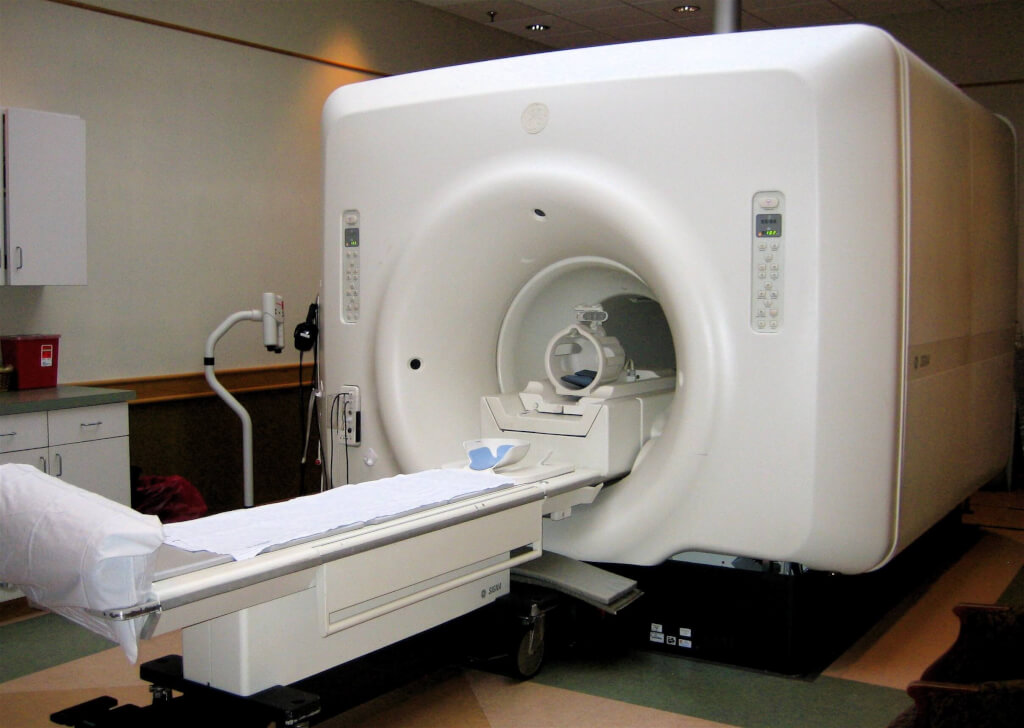
Of the various treatments available for treating cancer – radiation therapy is one of the commonly used techniques.
It makes use of high-energy radiation for shrinking tumors and killing the cancer cells. Some of the commonly used radiation types include the X-rays, charged particles and gamma rays.
The radiation is delivered through a machine, either from outside the body or internally. The radiation that’s given from outside is known as the external-beam radiation therapy while the one given internally is called the internal radiation therapy – known as brachytherapy.
Most of the cancer patients happen to receive radiation therapy at some point of their treatment course.
A cell turns cancerous when the DNA gets damaged and the cell deviates from its path as a result of which it starts multiplying uncontrollably.
Radiation therapy works by destroying the DNA of the cancer cells either directly or by creating charged particles in the cell that work to destroy the DNA. When the DNA of cancer cells gets destroyed, they either stop multiplying or die. When the cells die, they are further broken and discarded off the body through its natural process.
However, during this process, radiation therapy even harms the normal cells round, which further leads to side effects.
When a patient is to be given radiation therapy, the doctor will take note of the probable damage the normal cells may have to undergo and the therapy is planned accordingly.
Radiation therapy is administered with two objectives – curative and palliative. When the objective of radiation therapy is to cure the cancer then it will work by removing the tumor or preventing its recurrence. For curative purpose, radiation therapy is given as a stand-alone treatment or is combined with radiation therapy.
For palliative purpose, radiation therapy works with the objective of relieving the cancer symptoms and cut down the discomfort the patient is experiencing.

It all starts with your treatment planning, known as stimulation. During this process, your doctor will identify the location of your tumor through imaging scans; computed tomography (CT) and magnetic resonance imaging (MRI).
Once stimulation is done, the next thing is determining the precise area that has to be treated. Based on the location, the dose required will also be decided.
The area determined for the treatment will not only include the tumor but also some healthy tissues surrounding it. Healthy tissues are selected for:
External-beam radiation therapy: This radiation type is mostly delivered as photon beams, x-rays or the gamma rays. Photon is the unit of light and is known to be the bundle of energy. The energy amount present within the photon tends to vary.
Photons that are found in gamma rays contain more energy as compared to the x-rays. This radiation type is administered with the help of a machine known as the linear accelerator (LINAC). This machine makes use of electricity for forming a current of swiftly-moving subatomic particles which in turn creates high-energy radiation used in treating cancer.
If you are being given the external-beam radiation therapy, then you will have everyday treatment sessions for several weeks. The exact number of radiotherapy sessions will depend on various factors such as the dose as given.
External-beam radiation therapy is also classified into different groups as the 3D-CRT which stands for 3-dimensional conformal radiation therapy. It makes use of highly refined computer software with progressive machines for delivering the radiation very precisely to the target areas.
There are some other methods as well, like:
Internal radiation therapy: Also known as brachytherapy, in this process the radiation is delivered through the radiation sources; radioactive materials which are placed within or on your body. There are various brachytherapy techniques used in treating cancer. The interstitial brachytherapy makes use of a radiation source that is placed in the tumor tissue. The intracavitary brachytherapy will use the source which is placed in a surgical cavity or your body cavity, near the tumor. Then there is episcleral brachytherapy, used for treating melanoma in the eye, and the source is attached to your eye.
Depending upon the nature of the cancer and the location, the internal radiation therapy also has types. The two common types of internal radiation therapy happen to be:
Apart from the radiation therapy types as mentioned above, there are other options too, which include:
Intraoperative radiation therapy (IORT): This type of radiation therapy is given to the cancerous tumor at the time of surgery. It is given either as external-beam or internal radiation therapy. This type allows the surgeon to keep away from healthy tissues in advance. And is highly helpful in cases where the tumor happens to be in closer proximity to the essential organs.
Systemic radiation therapy: In this type, the cancer patient is made to swallow or take an injection of the radioactive materials which targets the cancer cells. The radioactive material then leaves the body via sweat, saliva, and urine. These discarded fluids are also radioactive in nature and people taking care of the patient must take proper safety measures.
Radioimmunotherapy: It is a kind of systemic therapy that makes use of the monoclonal antibodies for delivering the radiation dose directly to cancer cells. It works by delivering very low doses of radiation and causes no effect to the healthy cells.
Similar to various other treatments for curing cancer, the radiation therapy also comes with its share of side effects. The common side effects of this treatment module include fatigue, nausea, skin irritation, and others.
These side effects depend on the cancer type, the location, extent of cancer, radiation dose and hence differ from person to person.
In certain cases of radiation therapy, no side effect is seen while in some, more than one side effect tends to surface.
Radiation therapy is known to cause late or early side effects. As the name suggests, early side effects occur in a very short span after the treatment process or in some cases, the side effects can surface during the treatment process only.
The early side effects are mild, short-term and treatable. The most commonly occurring early side effects include fatigue and skin changes.
Late side effects usually surface over months and years of the treatment process. These side effects can occur in any of the body’s normal tissue that has received radiation. Chances of late side effects depend on the area where radiation was given as well as the dose. Late side effects can be avoided if the treatment is planned and designed carefully. It is advisable to consult the radiation oncologist at the best cancer hospital in India and Ahmedabad to understand and minimize the risk of the long-term side effects.

The fatigue one experiences after radiation treatment is nothing like the usual tiredness or fatigue. It makes you feel tired not just physically but also mentally and emotionally. It’s a very common side effect of radiation therapy. Most people start feeling some amount of tiredness right after a few weeks of the therapy process. Fatigue occurs at the first place because during radiation therapy, the energy beam ends up destroying some healthy cells also, along with the cancer cells. With the progression of treatment process, the intensity of fatigue also starts increasing.
The skin part which has been exposed to radiation is likely to appear swollen, red, blistered, sunburned or tanned. The skin can become dry, itchy, and flaky and may start to peel after a few weeks of the process. This condition is known as dermatitis and if you come across any skin change, it should be brought to the notice of your radiation oncologist without any delay. To cope up or manage the skin changes, you should take care of a few things. Very importantly, you should avoid wearing body hugging clothes. Opt for loose clothes made of soft fabric. Take thorough care of the skin and don’t indulge in rubbing, scratching or scrubbing your skin. If you have to go out in the sun, never forget to apply a good quality sunscreen. All your skincare products like creams, moisturizers and lotions must be approved by your radiation oncologist.

Radiation therapy can make you lose your hair in the area where radiation is given. If the radiation dose is given on the head, you may notice thinning of your hair with unusual hair fall. Sometimes, it can even cause the hair in your eyebrows and lashes to fall. Radiation that’s given around the armpit can make the hair in your armpit to fall. The hair though will grow back, the density would differ.
If the radiation is given in the mouth or throat, or in stomach or intestine, you may have to bear eating and digestion troubles. The side effects include sores in mouth, vomiting, nausea and loss of appetite. Radiation oncologists advise that even if there exists an eating problem, you should make it a point to eat nutritional foods so that you don’t suffer from any nutritional deficiency.
You may experience any of the above-mentioned side effects during or after the radiation therapy. However, you should make it a point to take care of certain things that will help you cope with the side effects in a better way.
Some of the things to take care of are:
Try and get plenty of rest. This will help you overcome fatigue and feel good. It is advised that you sleep properly so that your body gets to retain energy.
Your diet is very important for the effectiveness of the treatment and your health. Make sure that you eat a balanced diet and take care of the nutritional substances that form part of your everyday meal. Speak to your radiation oncologist and nutritionist to get the right information about diet during and after the treatment process.
Monitor your health and recovery during the process. If at all you notice any unusual change, do notify it to your medical team without any delay.
Seeking proper medical help can aid in managing the side effects in an effective manner. The radiation oncologist will help you with proper management of side effects while giving you the most effective cancer treatment. If the side effects are causing much of trouble, then you may be recommended certain medications that can help in relieving the symptoms or side effects.
In most of the cancer treatments, the two treatment types commonly heard are radiation therapy and chemotherapy. And often people get confused between the two treatment types.
The Chemotherapy process, also known as chemo, makes use of a combination of drugs for treating cancer. Chemotherapy is more of a “systemic” treatment which works through the entire body for preventing the spread of cancer cells. The drugs as used in the process will depend on the cancer type and the cancer stage. It will even be affected by your overall health and age. The main objective of chemotherapy is to prevent the cancer from spreading to the other parts of your body.
You will be given the chemotherapy drug by an experienced medical oncology professional, usually a nurse or a doctor. Chemotherapy can be given as an outpatient process which normally happens in a hospital, at the doctor’s office, or sometimes, it can even be given at home. The chemo drugs can be given through any of the following ways:
Like radiation, chemotherapy also has certain side effects and they differ based on the type and dosage of chemotherapy drug as used and the way your body reacts to it. As the chemotherapy drugs transit through your body, they also tend to impact the healthy cells in your body, which leads to various side effects.
Chemo is designed for killing the fast-growing cancer cells, however; this often leads to side effect that involves your body’s healthy and fast-growing cells.
Some healthy cells that can get affected because of chemotherapy treatment include:
Some of the chemo drugs can even cause damage to the cells present in your heart, bladder, lungs, kidneys, and the nervous system. As you continue with the chemotherapy sessions, your doctor will continue monitoring your condition closely and can even prescribe certain medicines for protecting the normal cells in your body. If need be, you may even be recommended medicines that can help in relieving the side effects.
Contrary to chemotherapy, where drugs are used for treating cancer, the radiation therapy makes use of the high-energy particles or radiation waves for destroying or damaging the cancer cells.
The major difference between chemotherapy and radiotherapy is that radiotherapy is only used to treat the tumor which is why it will affect on the concerned part of your body. In chemo, the side effect can be associated with any cells in your body.
In most of the cases, a radiation therapy can be administered as a stand-alone treatment but in some cases, it will be combined with chemotherapy or for that matter any other cancer treatment type like surgery.
Radiation therapy is one of the effective treatments that can aid in managing cancer, its symptoms and the side effects it causes. While a radiation therapy can be used for treating any cancer type, your oncologist will be the best person to decide as to which treatment will work best in your case.
At Shalby Hospitals, we make use of the latest instruments and machines for radiation therapy. Our teams of highly proficient and expert radiation oncologists carefully examine your condition, overall health and medical history before prescribing the precise dose of radiation, that too with great care.
Our experts make it a point to consider the below factors before deciding on the duration of your radiation therapy. These factors include:
With the expertise of well-trained radiation oncologists, skilled nurses and paramedical staff; our team ensures that you get highly effective and safe medical care during the entire process.
In our modern lives, the adage “Sitting is the New Smoking” has become increasingly relevant. But beyond this familiar warning lies a more alarming truth: our daily choices significantly impact our health. The combination of prolonged inactivity, indulgence in junk food, smoking,...
India is one of the fastest-growing economies in the world, with a population of over 1.3 billion people. However, this economic and demographic growth also brings many challenges for the healthcare system, especially in terms of managing the burden of non-communicable diseases...
Just like the women were oppressed for centuries together, the story of men is no exception. While women have been the primary victims of gender-based oppression, men have also been subjected to unfair and unrealistic expectations that have caused them physical and...